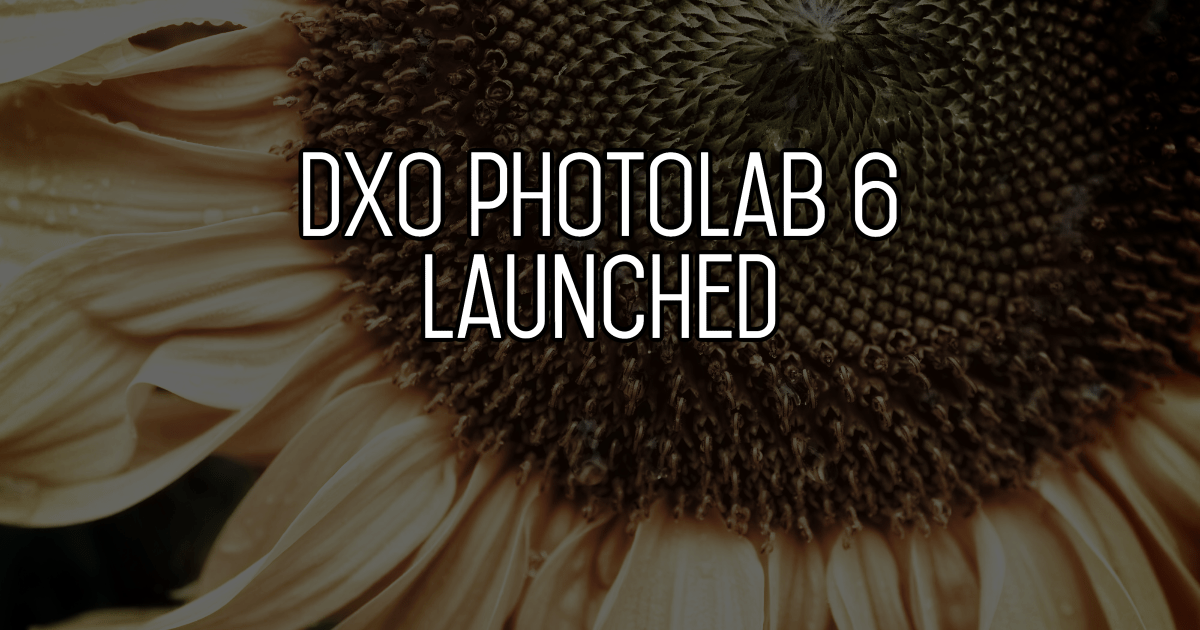October 13, 2022
DxO PhotoLab 6
The RAW image processing software, PhotoLab, from DxO receives its sixth large-scale update with the addition of improved de-noising and a new colour space

When it comes to image editing software, products such as Adobe Lightroom or CaptureOne are the first products that spring to mind. However, a product that consistently wins awards is DxO’s PhotoLab. The latest version of the raw processing software has just been released, and I’ve had the chance to try out the new features in this sixth release.
Improved Noise Reduction
In March of this year, I reviewed DxO’s PureRaw 2, which introduced an improved noise production process badged as DeepPRIME. I have been using this software for several months now and am always amazed at how it can remove noise from high-ISO images. DeepPRIME has been added to the latest version of PhotoLab 6. Not only that, it has been improved! Built into the latest release is DeepPRIME XD (which stands for eXtreme Details).
DxO state that this latest technology using a neural network-trained processing engine gives results the equivalent of 2.5 stops. I put it to the test with an image shot at 12,800 ISO. As you can see below, the noise reduction is impressive and certainly much better than that available in Lightroom.

DxO Wide Gamut
The colours we see on our screens can, and often will, vary from the ones we print out. The latest screens have an amazing colour range that can’t be recreated, even on the best printers. In PhotoLab 6, DxO has produced its own extended colour working space. Now photographers can see many more colours on the latest screens. The image below shows how applying the new Wide Gamut colour space improves the image’s depth and range of colour.

You might ask what the point is of having this extended colour range when it’s lost if you choose to output your photograph to a printer. This is a good challenge and one answered by DxO to say that photographers can get the maximum benefit from their advanced monitors and then use a simple soft-proofing process to see how the result will look in printed media.

Better IPTC management
As a professional photographer, adding IPTC data to images is vital to my workflow. It adds information behind the scenes to show who owns the picture and provides contact and usage information. The latest release of PhotoLab has extended the range of EXIF and IPTC tags available to be edited. The process of updating and copying information to similar images is simple. It’s by no means as powerful as a specialist tool such as Photo Mechanic, but it does give a quick way to make minor updates.

Improved cloning and retouching
One of my biggest bugbears with Adobe Lightroom is the need to dip out of the Develop module and do more complex cloning and healing in Photoshop. DxO has built-in some very powerful tools to clone and heal without the need to swap out to an external program. You will probably be used to being able to adjust the area being sampled in the heal or clone process. New features added in the latest release include being able to mirror and rotate the clone points.

Pricing and availability
In common with all DxO products, customers have to buy the software rather than use a subscription model. If this is your first time using the product then the Essential edition will cost £129 (but this lacks the denoising and cloning improvements). The Elite Edition retails at £199. For existing users of PhotoLab 4 or 5, there is an upgrade pricing which is £65 to move to the Essential edition and £89 to the Elite edition. You can download a 30-day free trial at the DxO website.

Please give us your feedback.
If you’ve got any questions or comments, leave them below. You can sign up for the Edinburgh Photography Workshop monthly newsletter, where you’ll get regular updates on exciting things happening in photography and some great tips. Sign up by clicking here.
About the author
As well as running Edinburgh Photography Workshop, Rich Dyson is a professional photographer. His photographs are regularly used in newspapers such as The Times, Guardian and Daily Telegraph. He also had two solo exhibitions and was featured in a members-sponsored exhibition in the Scottish Parliament. You can see and buy his photography at richdysonphotography.com.